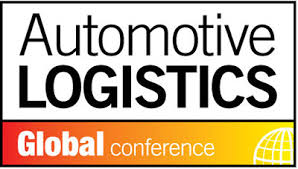
Written By: TMSA Staff | Sep 22, 2016 12:00:00 AM
TMSA's CEO Brian Everett had the opportunity to recently attend the Automotive Logistics Global Conference in mid-September in Detroit. The event was sponsored by several companies active in TMSA, including Landstar, Hub Group, C.H. Robinson, Penske, American Journal of Transportation, and Inbound Logistics. He shares a few observations here:
"Excellence is to do a common thing in an uncommon way." This mantra by Booker T. Washington is what Steve Beahm, Senior Vice President of Supply Chain Management at Fiat Chrysler Automobiles lives every day. But to apply this theme of excellence to his management style, Beahm focuses on a three-pronged approach in managing his operation: Listen, learn, Lead.
I had the opportunity to learn more from Steve when I recently attended this conference. A 30-year-veteran in the industry, Steve said when he first arrived at Fiat Chrysler he spent a significant time with his team. His goal was to listen and to learn. By intently listening to his people and learning about their operations, he realized that there were more than 100 touch points in their supply chain. "I'm a firm believer in focusing on the fundamentals," he says.
So that's what they did. After realizing that 20 of these touch points were approximately 80 percent of the business (you know, that 20/80 Rule again!) he then began to lead his group. The re-organized, and then began to hold regular S&OP meetings to ensure communication and collaboration continued to flow. And of course, to quickly troubleshoot problems whenever they would arise.
Steve points out that keeping the team organized and moving in the right direction is no small task - particularly for a global organization such as his. He points out that there are significant challenges. For example, language can be a barrier (within his supply chain channel he deals with more than 20 languages and hundreds of dialects). They operate across 20 time zones. And there are significant additional challenges, including cultural differences, regulatory affairs that vary, and basic differences in day-to-day practices and systems.
As with any good leader, he realizes that good, consistent communication is absolutely critical - within his large enterprise as well as with providers and partners. His communication strategy incorporates a wide variety of communication channels and venues. He brings his team together through weekly and monthly telepresence meetings, and quarterly executive summits, as well as cross-regional meetings.
He also ensures consistent, regular communication with providers and partners. He conducts carrier roundtables to keep them informed on corporate priorities, challenges, opportunities and demand planning. He ensures one-on-one carrier assessments are conducted with his analysts and buyers. In addition, his group produces bulletins focused on critical developments that are sent to personal devices and laptops, monthly newsletters, and online scorecards to provide performance visibility in real time.
Steve's approach to business: Excellent communication helps to transform common supply chain management practices into the extraordinary.
Tags: Communications

We’re continuing our blog series on Thought Leadership in today’s post, with a focus on the “Leadership” aspect of it! We recently sat down to chat with Anne Miner, Founder and President of The...